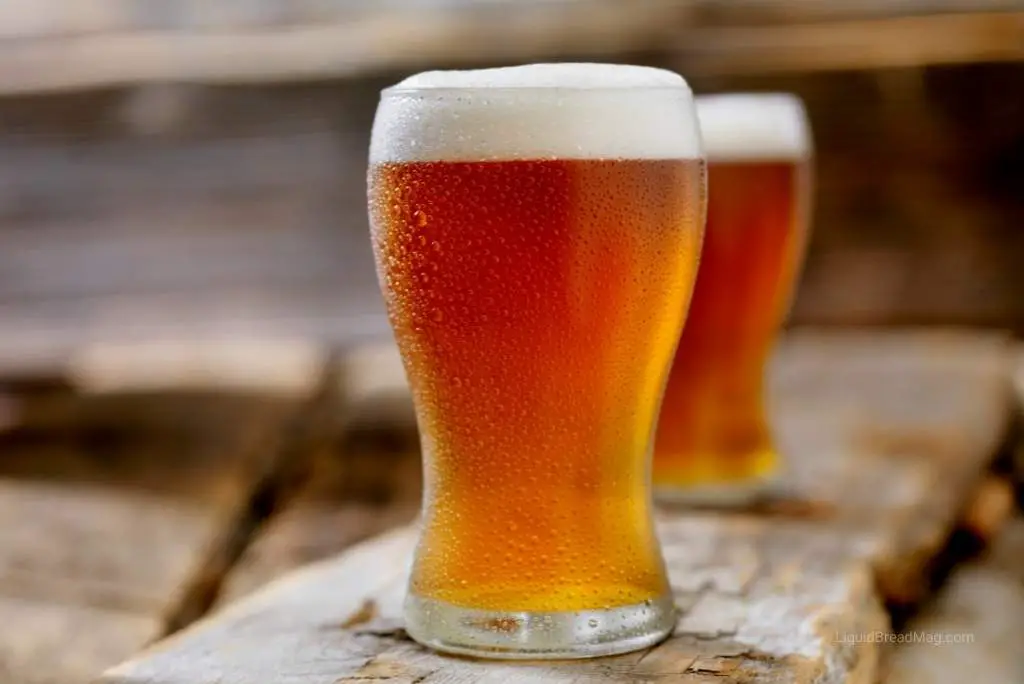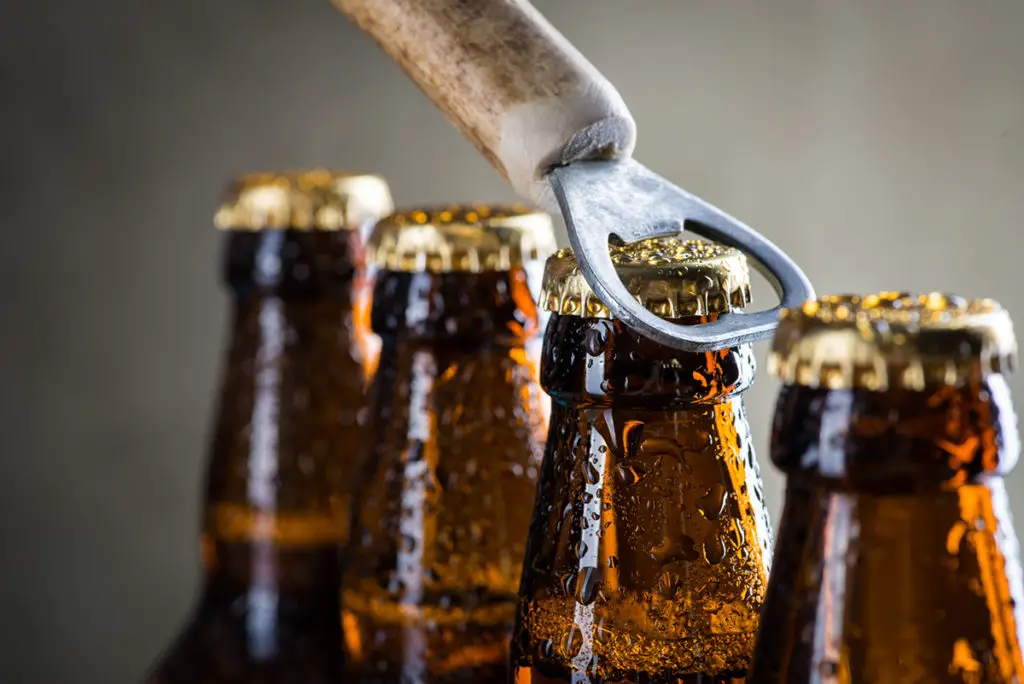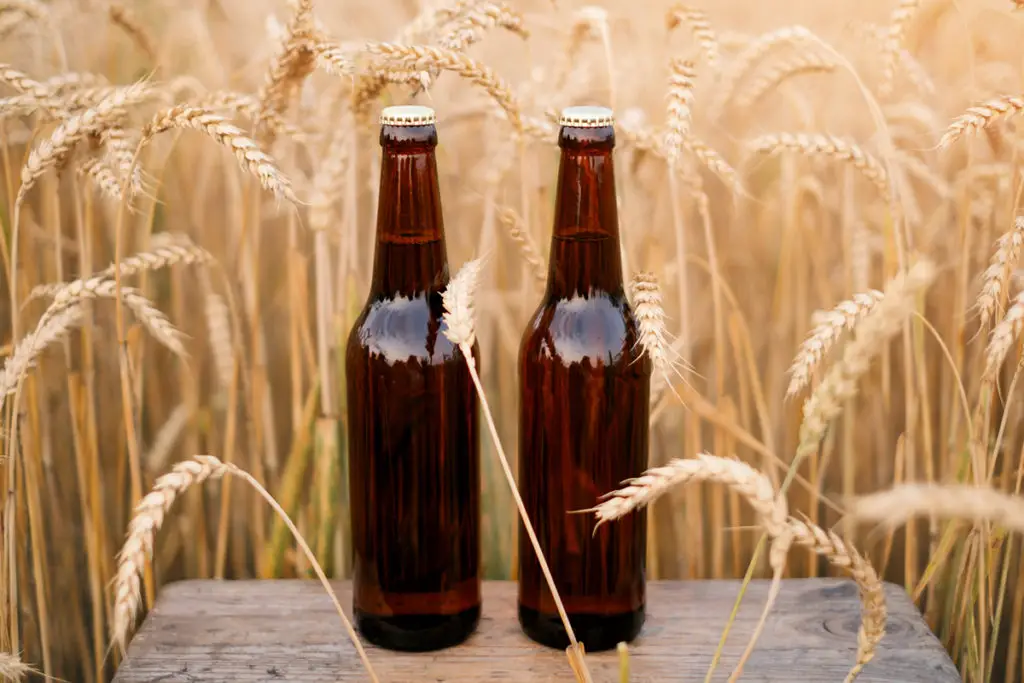If you frequent bars or you’re just an avid beer lover, you’ve probably noticed a wide range of “amber ales” available almost everywhere you go. Is amber beer just a name for beers of a particular color or is there something special about the flavor profile and brewing process of an amber beer? I guess the real question is: “What is amber beer?”
Amber beer is a style of ale originating on the US West Coast. The amber color comes from American grains and darker malts used in the brewing process. The flavor is similar to American pale ale but with a maltier finish.
Keep reading to see some details about the history of amber beer, as well as the flavor and brewing process. You haven’t started reading yet? What are you waiting for?
Where Amber Beer Came From

BEER DROP: Boxes of beer from Award-winning microbreweries → Join The Club
The phrase “amber ale” was initially used in Britain to distinguish beers that were darker than lagers and pale ales but lighter than stouts and other dark beers. The phrase was trademarked in 1860, but it expired in 2002.
However, a distinct style of “amber ale” was developed in America in the 1980s.
Craft beer brewers in the Pacific Northwest and California began using American grains and hops in their brews, as well as darker malts. This resulted in a distinct beer style of American ale with an amber color that gives the brew its name.
Over time, the popularity of amber ales spread across the US and even to Europe.
Today, the style is popular as far away as Ireland, Belgium, and even Australia. Many breweries around the world put their own spin on amber ales today. Sometimes, the brew is referred to as “American amber ale” to distinguish it from other amber-colored European brews.
What Does an Amber Beer Taste Like?
Amber beer has a complex yet smooth flavor profile that can be described as similar to IPAs, but with a maltier finish. The grains used in amber beer are typically roasted longer to bring out a more pronounced amber color, giving the beer a deeper taste.

American hops generally are more bitter and fruity than other hop varieties, which give the brew a medium hoppiness with notes of caramel or toffee flavors.
The beer typically has a light to medium carbonation and weight, and the profile is often classified between “crisp & clean” or “hoppy & bitter.” The beer’s texture is described as “smooth,” with malty flavors that tend to linger on the tongue.
The color of amber beer usually falls between 10 and 20 on the SRM scale of beer color.
There has been some debate over how dark an amber beer should be to truly be classified as an amber ale. Some are almost as light as pale ale, while others have a pronounced dark redness.
Many breweries use either unfiltered or minimally filtered brewing processes, giving many amber ales a distinct “haze.”
Amber beer’s robust hop flavor and fruity aroma make it pair well with red meat and cheese, and it’s an excellent beer for charcuterie or even barbecues. The taste can hold up to a wide range of meats such as steak, burgers, sausages, or even lamb.
In America, amber ale is typically served cool in a straight-sided pint glass.
Serving the beer too cold will mute the malty flavors, so serving it at a slightly warmer temperature is recommended. For amber ales with higher ABV (alcohol by volume) values, drinkers may opt for a No products found. (Amazon) in order to highlight the amber color and aromatic notes.
These glasses are tall and thin, with a bulb and wide mouth at the top of the glass to accommodate the white foam.
How Is Amber Beer Brewed?
The brewing process for amber beer is similar to the process for brewing pale ales. Darker malts and American grains are typically used, even in many European recipes. The grains are roasted longer, giving the final brew its distinct color and flavor.

Medium-light or dark crystal malt is used, along with grains that are roasted longer to lend more color to the brew. As mentioned before, many breweries opt for an unfiltered or minimally filtered brewing process, which gives many amber ales a distinct hazy quality.
Many amber beers have hops added after the brewing process to enhance the hoppiness of the brew.
Since many amber beers are more bitter than their pale counterparts, some breweries also use citrus fruit or floral additives in order to balance out the bitterness of the American hops.
The ABV for most amber beers falls between 4 and 7%, making them slightly more alcoholic on average than an average lager or pale ale. Some amber beers can contain as much as 12% ABV.
As mentioned before, the color of an amber beer typically falls between 10 and 20 on the SRM beer color chart.
American hops give the brew a distinct light carbonation and smooth texture. Head retention tends to vary between different amber ales. There are many local variations around the world, such as Flemish red ale, which has a more sour flavor.
Australian amber ales tend to be darker and closer to English brown ales.
Amber beer is one of the easiest styles of beer to brew at home. There is a wide range of recipes and tips available online. Always make sure you are following any local laws and regulations if you’re thinking of making homebrew. Because if you don’t, you might get in trouble for manufacturing beer illegally.
Final Thoughts
Amber beer is an excellent beer for people that want something darker without going all the way to the truly dark end of the spectrum.
The smooth mouthfeel and malty notes make it an ideal choice for barbecues or other gatherings where meats are served. It’s also an excellent pairing for hard, nutty cheese such as aged cheddar or manchego.
If you’re curious about trying amber beer, there are a wide variety of local variations on this American recipe found almost everywhere in the world. The best thing about amber beers is that they are always easy to find.
